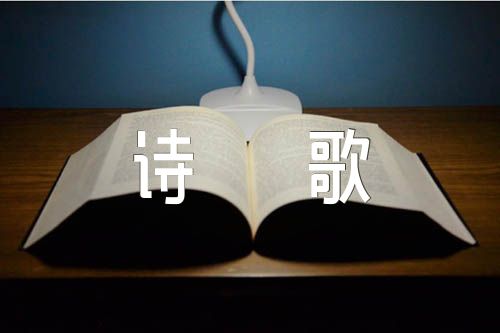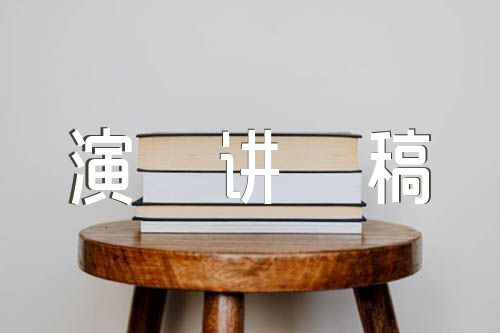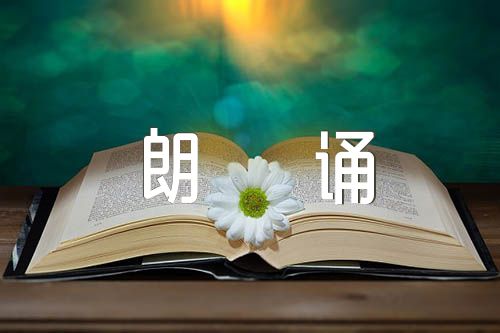The Basic Elements of Appreciating English Poetry
1.What is poetry?
Poetry is the expression of Impassioned feeling in language.
“Poetry is the spontaneous overflow of powerful feelings: it takes its origin from emotion recollected in tranquility.”
“Poetry, in a general sense, may be defined to be the expression of the imagination.”
Poetry is the rhythmical creation of beauty.
Poetry is the image of man and nature.
“诗言志,歌咏言。” ---《虞书》
“诗言志之所以也。在心为志,发言为诗。情动于中而行于言,言之不足,则嗟叹之;嗟叹之不足,故咏歌之;咏歌之不足,不知手之舞之,足之蹈之也。情发于声;声成文,谓之音。”
---《诗·大序》
“诗是由诗人对外界所引起的感觉,注入了思想与情感,而凝结了形象,终于被表现出来的一种‘完成’的艺术。” ---艾青:《诗论》
2.The Sound System of English Poetry
a. The prosodic features
Prosody (韵律)---the study of the rhythm, pause, tempo, stress and pitch features of a language.
Chinese poetry is syllable-timed, English poetry is stress-timed.
Stress: The prosody of English poetry is realized by stress. One stressed syllable always comes together with one or more unstressed syllables.
eg. Tiger, /tiger, /burning /bright
In the /forest /of the/ night,
What im/mortal /hand or /eye
Could frame thy/ fearful /symme/try? ---W. Blake
Length: it can produce some rhetorical and artistic effect.
eg. The curfew tolls the knell of parting day,
The lowing herd wind slowly o’er the lea,
The Ploughman homeward plods his weary way,
And leaves the world to darkness and to me.
---Thomas Gray
Long vowels and diphthongs make the poem slow, emotional and solemn; short vowels quick, passionate, tense and exciting.
Pause: it serves for the rhythm and musicality of poetry.
b. Meter or measure (格律)
poem---stanza/strophe---line/verse---foot---arsis + thesis;
Meter or measure refers to the formation way of stressed and
unstressed syllables.
Four common meters:
a) Iambus; the iambic foot (抑扬格)
eg. She walks/ in beau/ty, like/ the night
Of cloud /less climes/ and star/ry skies;
And all/ that’s best /of dark/ and bright
Meet in /her as /pect and /her eyes. ---Byron
b) Trochee; the trochaic foot(扬抑格)
eg. Never /seek to/ tell thy/ love,
Love that/ never/ told can/ be. ---Blake
c) Dactyl; the dactylic foot (扬抑抑格)
eg. Cannon to/ right of them,
Cannon to/ left of them.
Cannon in/ front of them,
Volley’d and/ thunder’d. ---Tennyson
d) Anapaest; the anapestic foot(抑抑扬格)
eg. Break,/ break, /break,
On thy cold /grey stones,/ O sea!
And I would /that my tongue/ could utter
The thought/ that arise /in me. ---Tennyson
c) Other meters
Amphibrach, the amphibrachic foot (抑扬抑格);
Spondee, the spondaic foot(扬扬格);
Pyrrhic, the pyrrhic foot (抑抑格);
d) Actalectic foot (完整音步) and Cactalectic foot(不完整音步)
eg. Rich the / treasure,
Sweet the / pleasure. (actalectic foot)
Tiger,/ tiger, /burning /bright,
In the/ forest/ of the/ night. (cactalectic foot )
e) Types of foot
monometer(一音步)
dimeter(二音步)
trimeter(三音步)
tetrameter(四音步)
pentameter(五音步)
hexameter(六音步)
heptameter(七音步)
octameter(八音步)
We have iambic monometer, trochaic tetrameter, iambic
pentameter, anapaestic trimeter, etc., when the number of
foot and meter are taken together in a poem.
C. Rhyme
When two or more words or phrases contain an identical
or similar vowel sound, usually stressed, and the
consonant sounds that follow the vowel sound are
identical and preceded by different consonants, a rhyme
occurs.
It can roughly be divided into two types:
internal rhyme and end rhyme
Internal rhyme
a) alliteration: the repetition of initial identical consonant sounds or any vowel sounds in successive or closely associated syllables, esp. stressed syllables.
eg. The fair breeze blew, the white foam flew,
The furrow followed free.
---Coleridge
I slip, I slide, I gloom, I glance,
Among my skinning swallows.
---Tennyson
Whereat with blade, with bloody blameful blade,
He bravely broached his boiling bloody breast.
---Shakespeare
“Consonant cluster” (辅音连缀)
“internal or hidden alliteration” (暗头韵) as in
“Here in the long unlovely street” (Tennyson)
The Scian & the Teian muse,
The hero’s harp, the love’s lute,
Have found the fame your shores refuse.
---Byron
b) Assonance (腹韵/元音叠韵/半谐音):the repetition of similar or identical vowel sounds in a line ending with different consonant sounds.
eg. Do not go gentle into that night
Old age should burn and rave at close of day.
Rage, rage against the dying of the light.
Though wise men at their end know dark is right,
Because their words have forked no lightning they
Do not go gentle into that night.
c) Consonance (假韵): the repetition of the ending consonant sounds with different preceding vowels of two or more words in a line.
eg. At once a voice arose among
The bleak twigs overhead
In a full-hearted evensong
Of joy illimited.
---Hardy
End rhyme: lines in a poem end in similar or identical
stressed syllables.
a) Perfect rhyme
Perfect rhyme (in two or more words) occurs in the following three conditions:
identical stressed vowel sounds (lie--high, stay--play);
the same consonants after the identical stressed vowels (park--lark, fate-- late);
different consonants preceding the stressed vowels (first– burst);
follow—swallow (perfect rhyme)
b) imperfect/ half rhyme: the stressed vowels in two or more words are the same, but the consonant sounds after and preceding are different.
eg. fern—bird, faze—late, like—right
c) Masculine and feminine rhyme
eg. Sometimes when I’m lonely,
Don’t know why,
Keep thinking I won’t be lonely
By and by.
---Hughes
The comrade of thy wanderings over Heaven,
As then, when to outstrip thy skiey speed
Scarce seem’d a vision; I would ne’er have striven…
---Shelley
Rhyme scheme (韵式)
a) Running rhyme scheme (连续韵)
two neighbouring lines rhymed in aa bb cc dd:
eg. Tiger, tiger, burning bright
In the forests of the night,
What immortal hand or eye
Could frame thy fearful symmetry?
In what distant deeps or skies
Burnt the fire of thine eyes?
On what wings dare he aspire?
What the hand dare seize the fire?
b) Alternating rhyme scheme (交叉韵)
rhymed every other line in a b a b c d c d:
eg. Shall I compare thee to a summer’s day?
Thou art more lovely and more temperate:
Rough winds do shake the darling buds of May,
And summer’s lease hath all too short a date:
---Shakespeare
c) enclosing rhyme scheme (首尾韵)
In a quatrain, the first and the last rhymed, and the second and the third rhymed in a b b a:
eg. When you are old and gray and full of sleep,
And nodding by the fire, take down this book,
And slowly read, and dream of the soft look
Your eyes had once, and of their shadows deep;
---W. B. Yeats
D. Form of poetry ( stanzaic form)
a) couplet: a stanza of two lines with similar end rhymes:
eg. A little learning is a dangerous thing;
Drink deep, or taste not the Pierian Spring.
b) heroic couplet: a rhyming couplet of iambic pentameter:
eg. O could I flow like thee, and make thy stream
My great example, as it is my theme:
---Denham
Then share thy pain, allow that sad relief;
Ah, more than share it, give me all thy grief.
---Pope
c) Triplet / tercet: a unit or group of three lines, usu. rhymed
eg. He clasps the crags with crooked hands;
Close to the sun in lonely lands,
Ringed with the azure world, he stands.
The wrinkled sea beneath him crawls:
He watches from his mountains walls,
And like a thunderbolt he falls.
---Tennyson
d) quatrain: a stanza of four lines rhymed or unrhymed.
eg. O my luve is like a red, red rose,
That’s newly sprung in June;
O my luve is like the melodie
That’s sweetly play’d in tune.
As fair art thou, my bonie lass,
So deep in luve am I;
And I will luve thee still, my dear,
Till a’ the seas gang dry.
---Burns
e) Sonnet: a fixed verse form of Italian origin consisting of
14 lines that are characteristically in iambic pentameter:
The Petrarchan / Italian sonnet (Francesco Petrarch):
two parts: octave, asking question, presenting a problem,
or expressing an emotional tension rhyming abba abba;
while the sestet, solving the problem rhyming cde cde,
cde cde, or cd cd cd.
Shakespearean / English sonnet:
arranged usually into three quatrains and a couplet,
rhyming abab cdcd efef gg. The first quatrain introduces
a subject, the second expands, and once more in the third,
and concludes in the couplet.
Spenserian sonnet: three quatrains and a couplet rhyming
abab bcbc cdcd ee;
Miltonic sonnet: simply an ltalian sonnet that eliminates the
pause between the octave and sestet.
f) Blank verse: the unrhymed iambic pentameter
eg. To be, or not to be: that is the question:
Whether ’tis nobler in the mind to suffer
The slings and arrows of outrageous fortune,
Or to take arms against a sea of troubles,
And by opposing end them? To die: to sleep;
---Shakespeare
g) Free verse: poetry that is based on irregular rhythmic
cadence of the recurrence, with variations, of phrases,
images and syntactical patterns rather than the
conventional use of meter.
eg. Days
What are days for?
Days are where we live.
They come, they wake us
Time and time over.
They are to be happy in
Where can we live but days?
Ah, solving that question
Bring the priest and doctor
In their long coats
Running over the fields.
---Philip Larkin
3.The semantic system of English poetry
a. The meaning of poetry
Poetry is “the one permissible way of saying one thing
and meaning another”. (Frost)
The meaning of a poem usually consists of three levels,
that is, the literal (the lowest), the sensory (the medium)
and the emotional (the highest).
b. Image---the soul of the meaning in poetry
a) Definition: “language that evokes a physical sensation
produced by one or more of the five senses--- sight,
hearing, taste, touch and smell.” (Kirszner and Mandell)
A literal and concrete representation of a sensory
experience or of an object that can be known by one or
more of the senses.
b) Types of images
In terms of senses:
visual image (视觉意象)
auditory image(听觉意象)
olfactory image(嗅觉意象)
tactile image (触觉意象)
gustatory image (味觉意象)
kinaesthetic image (动觉意象)
eg. Spring, the sweet spring, is the year’s pleasant king,
Then blooms each thing, then maids dance in a ring,
Cold doth not sting, the pretty birds do sing:
Cuckoo, jug-jug, pu-we, to-witta-woo!
---Thomas Nashe
In terms of the relation between the image and the object:
Literal (字面意象) and figurative image (修辞意象)
The former refers to the one that involves no necessary
change or extension in the obvious meaning of the words;
or the one in which the words call up a sensory
representation of the literal object or sensation.
The latter is the one that involves a turn on the literal
meaning of the words.
eg. Let us walk in the white snow
In a soundless space;
With footsteps quiet and slow,
At a tranquil pace,
Under veils of white lace.
---Elinor Wylie
In terms of the readers: fixed and free image
(稳定意象和自由意象)
By fixed or tied image, it is the one so employed that its
meaning and associational value is the same or
nearly the same for all readers.
By free image, it is the one not so fixed by the context that
its possible meanings or associational values are limited, it
is therefore, capable of having various meanings or values
for various people.
eg. Snake
I saw a young snake glide
Out of the mottled shade
And hang limp on a stone:
A thin mouth, and a tongue
Stayed, in the still air.
It turned; it drew away;
Its shadow bent in half;
It quickened and was gone.
I felt my slow blood warm.
I longed to be that thing,
The pure, sensuous form.
And I may be, some time. ---Theodore Roethke
c) The function of image:
to stimulate readers’ senses;
to activate readers’ sensory and emotional experience;
to involve the readers in the creation of poetry with personal and emotional experience;
to strike a responsive chord in the hearts of readers;
eg. Fog
The fog comes
on little cat feet.
It sits looking
over harbor and city
on silent haunches
and then moves on.
---Carl Sandberg
eg. Fire and ice
Some say the world will end in fire,
Some say in ice.
From what I’ve tasted of desire
I hold with those who favor fire.
But if it had to perish twice,
I think I know enough of hate
To say that for destruction ice
Is also great
And would suffice. ---R. Frost
C. The means of expressing meaning
a) Phonetic devices
onomatopoeia
A widow bird
eg. A widow bird was mourning for her love
Upon a wintry bough;
The frozen wind crept on above,
The freezing stream below
There was no leaf upon the forest bare,
No flower upon the ground,
And little motion in the air
Except the mill-wheel’s sound. P. B. Shelley
Pun
eg.
The little black thing among the snow
Crying “’weep, ’weep” in notes of woe!
b) figures of speech
A. comparison: metaphor; simile (tenor 本体 , vehicle 喻体)
B. conceit
C. personification
D. metonymy (换喻)
E. apostrophe
F. synaesthesia (“通感”或“联觉”)
G. symbolism
H. hyperbole
I. Allusion (典故)
c) Deviation (变异):the digression from the normal way of
expressions
Lexical deviation (self-made words)
Grammatical deviation (slang, vernacular)
Deviation of registers
Deviation of cultural subjects
http://m.jianqiaoenglish.com/80473.html
推荐访问:英语诗歌经典100篇 英语诗歌朗诵3分钟




